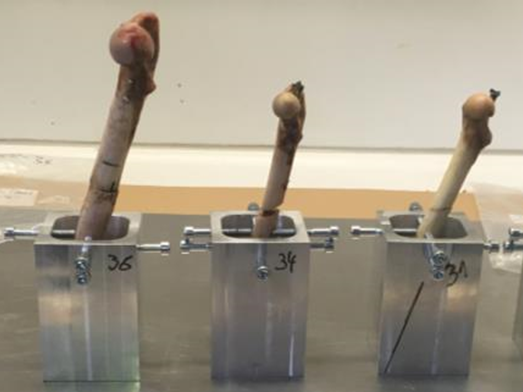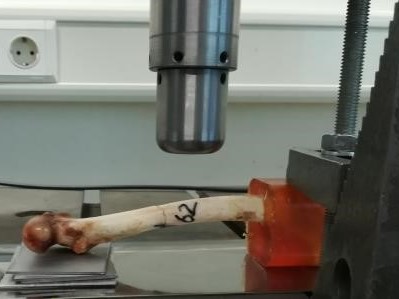T. Plenert, G. Garlichs, Ingo Nolte, Lisa K. Harder, Maiwand Hootak, S. Kramer, Bernd-Arno Behrens, Jan-Peter Bach (2020) Plos One, Volume: 15, Issue: 5, Article number: e0231823.
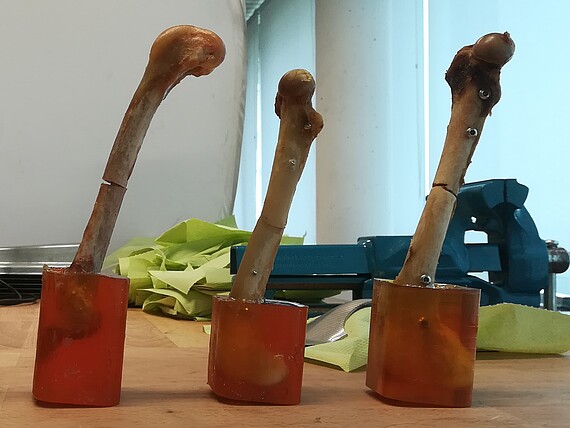
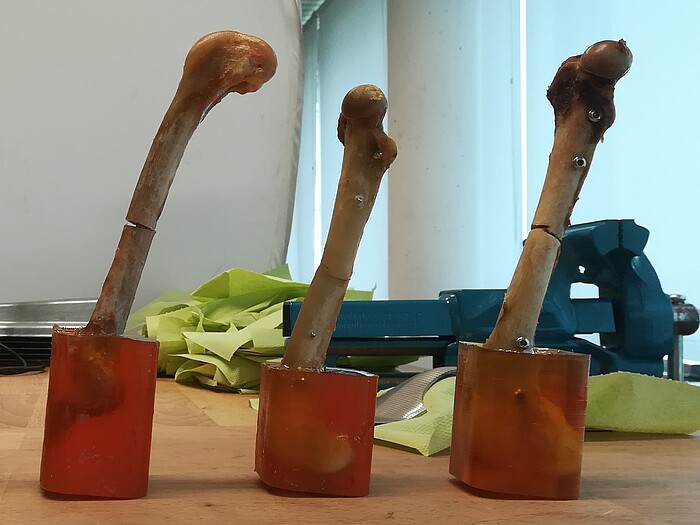
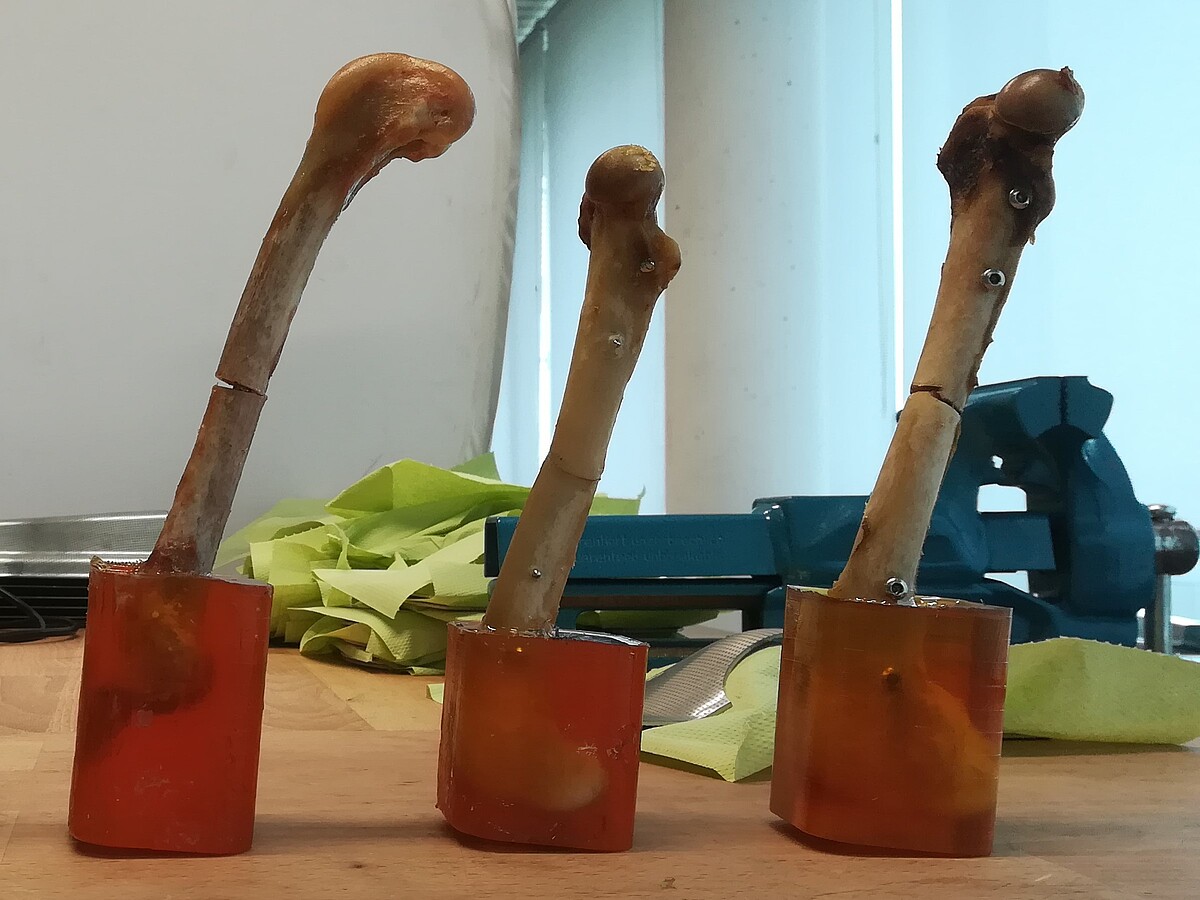
In order to evaluate the stability of an implant to be developed, biomechanical testing is necessary, among other things. Within the framework of various research projects, special setups have been developed for the mechanical testing of bones. For example, special fixtures have been developed and constructed to test both axial and rotational stability in bones with and without implants. The required information on force application (location and angular position of force application) and strength was determined by multibody simulations (MBS). The possibility of adapting the testing machine precisely to the loads occurring in the patient means that individual requirements can be investigated. In addition, the multibody simulations support the understanding of emerging loads in the human or animal body
Publication
Within one project, a new approach to the intramedullary nail was tested. The application focused on the femur of dogs. Due to the combination of different forces in canine femur, a good fixation of the bone fragments is of very high importance. In order to test the strength beforehand in the laboratory, test equipment was developed that could give both axial loads and rotational loads to the bone. The results from the tests were evaluated and additionally also implemented in a finite element (FE) program to simulate the density behaviour of the bones based on these results. Furthermore, the new intramedullary nail was compared with already existing nails. Overall, the new approach offers potential that still needs to be substantiated by further investigations.







